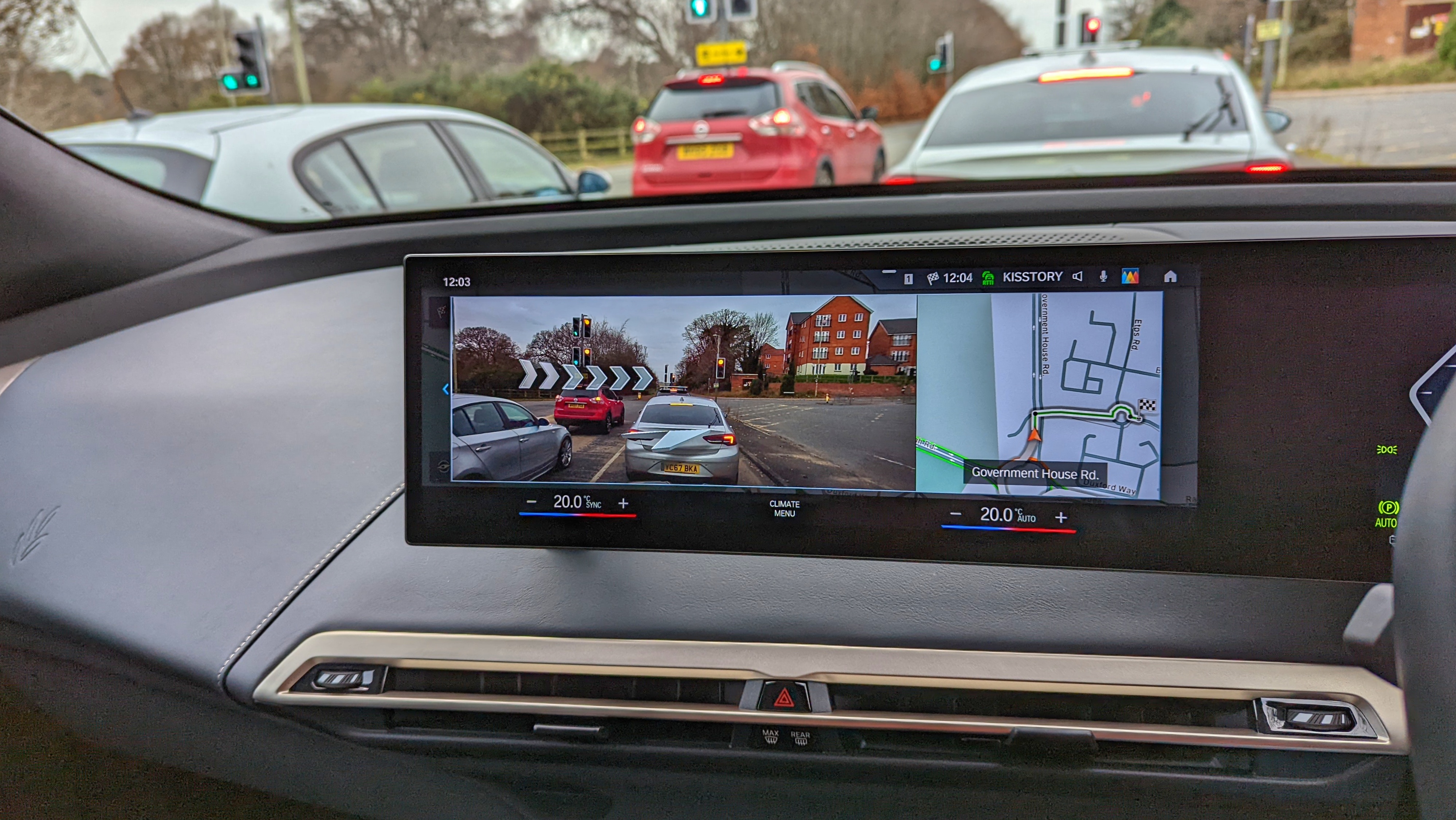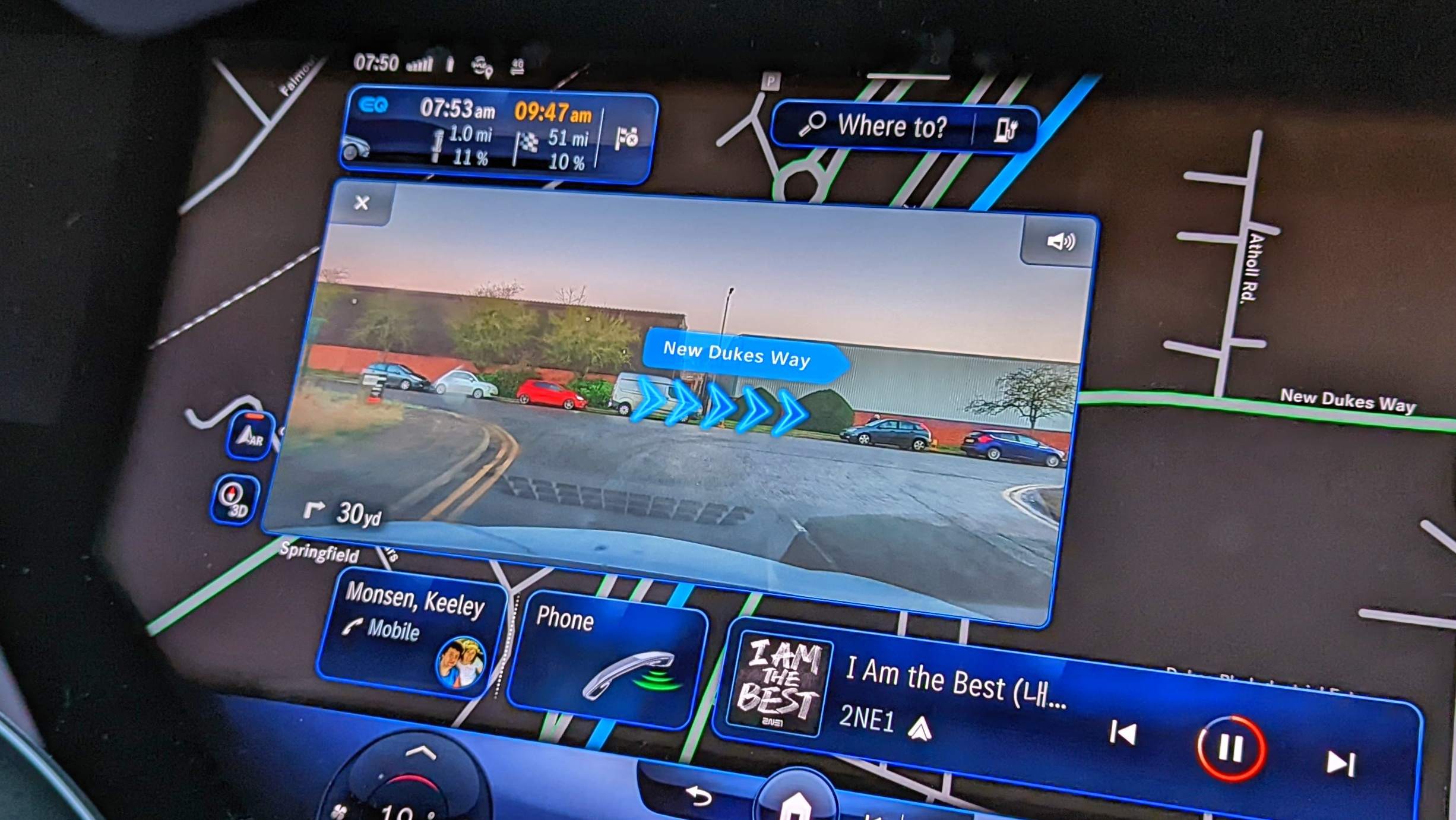I was ready to give up on AR, but electric cars have changed my mind
Opinion: No longer a gimmick

I have a rocky relationship with AR. It has always felt gimmicky, clunky, or needless; in some extreme cases, all three.
Experiences have been novel at times, perhaps fun in short doses, but as for enhancing my life beyond the offerings of non-augmented reality options, I've struggled to find situations where I use AR in my everyday life.
I was ready to give up on AR. I've watched one too many Apple keynotes where someone strides around an empty stage while holding an iPad displaying a virtual world laid on top of the real-world view. Great if you have a massive stage; not as impressive in the confines of your home.
I've been burned by Sony's augmented-reality mode in its smartphone camera app which, more often than not, fails to recognize a suitable surface in my home for its ham-fisted, dinosaur AR experience. I find myself rolling my eyes whenever I see 'scan this QR code for exclusive AR content' - it tends to be underwhelming.
But all is not lost, as my contempt for augmented reality is finally being turned to curiosity thanks to electric cars.
An eye-opening drive
At the end of 2021, I was able to drive the BMW iX for an hour or so. It comes equipped with an impressive array of technology, but what I found most useful driving around an area of the country I was not familiar with, was its navigation system.
The iX has a sizable head-up display (HUD) that beams vital driving information onto the windscreen and into your eye line, enabling you to check things like speed and your next navigation command without taking your eyes off the road.
Sign up for breaking news, reviews, opinion, top tech deals, and more.
It's bright and clear, but HUDs are no longer exclusively found on premium vehicles; so far then, nothing overly game-changing.
What is different about the system in the BMW iX is what happens on its large central display when you approach a junction. The screen gives you a view from the front-facing camera on the car, and overlays it with arrows showing you which turn you need to make.
I found this enhanced visualization fantastic; it made it very clear where I needed to turn and which exits I needed to take. My brief time with the iX meant I was unable to get a complete feel for the system, but it certainly whet my appetite for AR.



The longer-term test
Fast forward to this year, and I test drove the Mercedes EQS for a week, giving me enough time to understand the German firm's premium, fully electric luxo-barge.
Like the iX, the EQS is packed to the rafters with tech. The model I drove came with Mercedes' massive 'Hyperscreen' infotainment system, a continuous, 56-inch piece of glass that stretches across the entire width of the dash and houses three separate displays. As we mentioned in our Mercedes EQS review, "it looks incredibly futuristic."
Rounding off the futuristic experience is once again, the AR navigation, which like BMW, beams a view from the vehicle's front camera onto the larger display in the middle of the dash. From here, you get clear directions laid over the top of the real-time view of the road ahead.
The camera view takes up most of the screen in the BMW, but in the EQS, the AR feature appears as a pop-up on the display. It's still legible, and Mercedes also includes street names above its directional arrows, making it a touch more useful over BMW's version.
Additionally, the HUD in the EQS is more advanced, with clearer AR arrows beamed onto the road ahead, making it supremely easy to see where you need to go next.
In both vehicles, I found the technology worked seamlessly. It was easy to use, appeared at the times when I needed it most, but removed itself from view when I was driving on longer stretches of road where directions were not necessary. The systems aren't perfect though.



Driven to distraction?
The most obvious concern is the potential distraction caused by this kind of tech. A live feed from a camera with information overlaid can draw the eye, but when that scene is moving on screen, you might need more than a moment to make sense of the text and graphics applied over the top.
But it's important to note that the core aim of the augmented navigation system is to help drivers at junctions where speeds are generally lower. In these moments, it is easier to glance down quickly and register what's going on. It's a little safer, but I found the display would still draw my attention a little too much, at times.
The reliance on the central screen for this AR experience is likely just a stop-gap until manufacturers develop their HUDs far enough to have this information even more clearly displayed on the windscreen.
The HUD in the EQS is the best I've come across in any vehicle to date. Both its size and the level of detail it can display are impressive, and it's a sign of things to come where the head-up display becomes a driver's go-to information screen.
Moving the information to the HUD means less time looking away from the road, fewer distractions for the driver and even more useful AR implementation.

However much I'm starting to appreciate this kind of AR, there's still a long way to go before this kind of tech becomes a widespread reality most of us can enjoy. The BMW iX and Mercedes EQS are premium electric vehicles with hefty price tags that exceed the budgets of most people—which means you are unlikely to be able to experience this fancy AR feature.
However, we've seen in recent years a speedier waterfalling of features from the premium tiers to more affordable cars.
Features that were exclusive to luxury cars just a few years ago are now available at most price points, and while the quality and functionality varies depending on how much you're paying, there's a clear movement from manufacturers to open up new tech to lower-price points more quickly.
One thing is clear for me though, the electric car could be AR's savior. It's a practical, useful implementation of the technology that genuinely enhances and improves an everyday experience. It's exactly what AR needed, and I'm glad I've finally found an augmented reality experience I can get excited about.

TechRadar's former Global Managing Editor, John has been a technology journalist for more than a decade, and over the years has built up a vast knowledge of the tech industry. He’s interviewed CEOs from some of the world’s biggest tech firms, visited their HQs, and appeared on live TV and radio, including Sky News, BBC News, BBC World News, Al Jazeera, LBC, and BBC Radio 4.